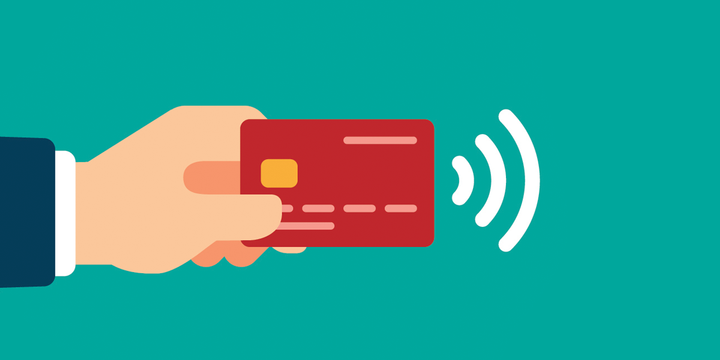Graphic: Gettyimages.com/KrizzDaPaul
The COVID pandemic forced an industry shift. The trucking and logistics industries will continue to look to technology adoption such as payment platforms to meet new safety and cost demands.
Even before the onset of the global COVID-19 pandemic, the use of checks and cash in the logistics space was already beginning to be displaced by faster and easier contactless payments. The pandemic ushered in a greater sense of urgency to re-evaluate how payments are completed in order to make social distancing easier.
For more than a year, professional truck drivers have navigated these new payment challenges, as warehouses and distribution facilities adopted new safety protocols. In some cases, drivers weren’t allowed inside facilities to complete payment transactions. Digital payments weren’t just a convenience — they were adopted for the sake of safety.
The adoption of these payment platforms will have lasting impact long after COVID is gone. Not only do they enhance safety and efficiency, but they’re also cheaper than issuing paper checks, improve business resiliency, and create a more simplified payment process overall.
Fleets looking to adopt modern payment platforms and make the best use of this financial technology in their business operations should ask themselves the following questions when deciding if the technology is the best fit.
1. Are you currently chasing a lot of paper?
If the answer to this question is a resounding “yes,” your fleet would likely benefit from a simplified process. Many modernized payment platforms offer a one-stop shop when it comes to logistics commerce. Payment activities such as using credit cards and fleet checks to make payments, custom customer invoices, digital receipts, load closeout and billing procedures can often be consolidated under one simple user interface — dramatically reducing the amount of paper you’re left chasing.
2. Are drivers regularly missing paper receipts?
Drivers already have a lot on their plate separate from tedious paper receipt collection and organization. By deploying a digital and instant payment process, a digital record is captured (meaning no paper receipt), transaction processing time is reduced, and a more efficient, streamlined process is created. In addition to the benefit of no paper receipts to keep track of, drivers also see reduced wait times, eliminating lengthy transactions and time spent on the dock. This efficiency can reduce facility back-ups and maximize pay for drivers, all while getting goods to facilities in a seamless way.
3. Are manual reconciliations and invoicing slowing down cash flow or causing you to miss reimbursements or payments?
COVID-19 has highlighted the need to operate more efficiently, from reconciliations to invoicing and every other payment activity. Businesses with a digital financial platform in place have taken an effective step towards ensuring future business continuity in the face of uncertainty. By replacing paper-based systems, fleets alleviate friction and high labor costs, while positioning themselves to be able to shift to digital operations seamlessly.
Multiple studies have found that issuing paper checks is significantly more costly to businesses than making electronic payments. In fact, electronic invoice payment processes cost 60% less on average than their paper-based counterparts, according to The Hackett Group. Of course, the cost to issue a check will vary between businesses due to factors such as check volume, labor, printing, mailing prep, etc. But ultimately a digital payment platform will cut down on administrative and office supply costs while providing an online tracking system.
4. Are drivers struggling to navigate COVID restrictions and protocols?
Perhaps the greatest initial draw to contactless payments in the trucking and logistics industry is the safety component. With the onset of the pandemic, safety measures and protocols changed overnight, limiting in-person interaction and payment activities. Digital payment technology is a safer alternative to in-person payments in a pandemic environment, making it easier to follow social distancing guidelines and eliminating the need for face-to-face transactions altogether.
From an additional safety viewpoint, these technologies are also more secure against fraud threats, which is why the Federal Trade Commission encourages use of electronic payments instead of paper checks. And drivers are no longer required to carry large amounts of cash.
Making the shift
Implementing a new technology in your fleet can seem like a daunting task. However, for most fleet operations, a modern payment platform can fit into an overarching strategy seamlessly, creating more efficient, safe and cost-effective payment processes for drivers.
The COVID pandemic forced an industry shift, and one that will likely have lasting permanence. The trucking and logistics industries will continue to look to technology adoption such as payment platforms to meet new safety and cost demands.
Source: https://www.truckinginfo.com/





